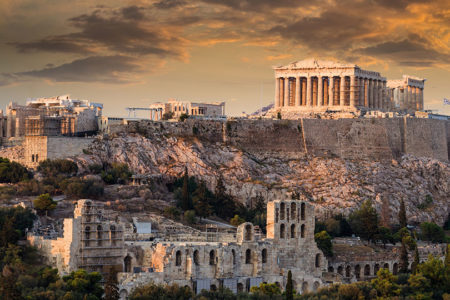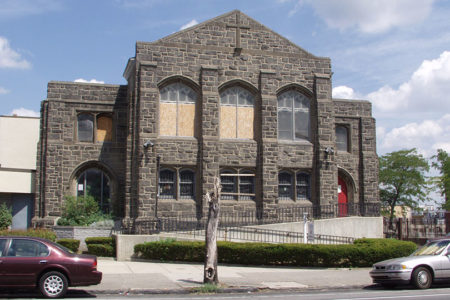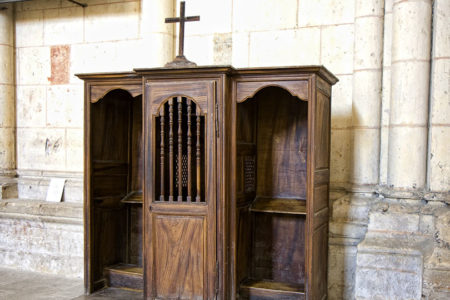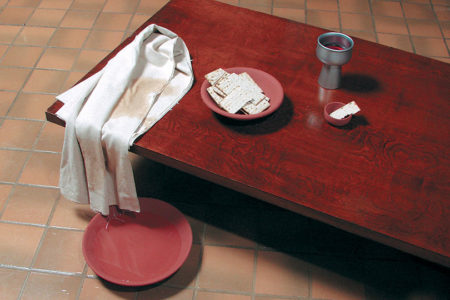The Only Priest We Need
The discussion was friendly but deep: “I just don’t understand why I have to go to a priest, who is a mere mortal, to hear my confessions and have my sins forgiven.”
It was an honest statement and needed to be answered. Indeed, no human priest, regardless of ecclesiastical authorization by ceremony or position, can forgive sins. Only God can (Isa. 43:25; Lk. 5:21, 24). Still, the doctrine of the priesthood is biblical. According to Scripture, we do need a priest to provide our salvation, security, and present peace (shalom). That priest is Jesus Christ, our Great High Priest (Heb. 4:14).
Salvation
Some time ago a traveling evangelist was singing to himself the song “I’ve Been Redeemed.” A fellow passenger, hearing him sing, joined in. Afterward the evangelist put the question to the stranger, “Have you been redeemed?”
“Yes, praise the Lord,” was the answer.
“May I ask how long since?”
“About nineteen hundred years ago,” the passenger said.
The reply stunned the evangelist. “Nineteen hundred years ago?”
“Yes sir. But I’m sorry to say it’s not much more than a year that I have known it.” 1
The Bible clearly teaches that all of humanity is plagued by a sin nature. Though sin manifests itself in different ways and degrees in each person’s life, the fact remains, “all have sinned” (Rom.3:23, cf. Eccl. 7:20). Christ, as our Great High Priest, came to provide a pardon for sin.
Wherefore, in all things it behooved him to be made like his brethren, that he might be a merciful and faithful high priest in things pertaining to God, to make reconciliation for the sins of the people (Heb. 2:17).
The imagery used in the book of Hebrews to convey this basic truth is the solemn Jewish observance of Yom Kippur (Day of Atonement). According to Leviticus 16, the high priest performed several unique tasks on the Day of Atonement. First, he removed and set aside his garments of grandeur. Wearing only the simple outfit of an ordinary priest, he alone officiated the special sacrifices. Second, on the Great Altar of the Temple, he offered a perfect animal for himself and for the priesthood.
Then followed the people’s offering. The blood of the sacrifice was carried behind the Temple’s inner veil and sprinkled on the Mercy Seat in the Holy of Holies. Finally, the high priest quickly exited from behind the curtains. The people rejoiced to see him alive. It was their proof that God had accepted the blood. The atonement was accomplished.
Yom Kippur was fulfilled in the person and ministry of Christ. First, He was not a human priest after the pattern of Aaron, who was Judaism’s first high priest. Rather, Jesus Christ set aside the outward manifestation of His glory and became the incarnate God, appointed by God as prophesied in the Old Testament: “The LORD hath sworn, and will not repent, Thou art a priest forever after the order of Melchizedek” (Ps. 110:4; cf. Heb. 7:21).
Second, not only was Christ the High Priest, but He alone officiated the special sacrifice needed for an everlasting salvation—the sacrifice of Himself. Having done so, Christ passed through the heaven of clouds and stars into the heaven of heavens to present Himself (Heb 4:14). A well-known commentator explained the significance of this truth:
Not until the high priest had carried the atoning blood into the Holy of Holies, and had sprinkled it on the Mercy Seat, was the atonement complete. Likewise, our Lord’s atonement was not complete at the Cross. Not until He had entered heaven as the High Priest having made atonement for sin, was His atonement complete. He, glorified High Priest, in His body of flesh and bones but no blood, had to present Himself at the Mercy Seat in Glory in His bloodless body, the evidence that sin had been paid for.2
Christ, our Great High Priest, provided something far superior and better than what was available under the Old Testament. He provided eternal salvation: “Neither by the blood of goats and calves, but by his own blood he entered in once into the holy place, having obtained eternal redemption for us” (9:12).
The people rejoiced to see the high priest emerge from behind the curtains on Yom Kippur. It indicated that God had accepted the atonement. By the same token, Jesus’ resurrection was proof that the plan of redemption was complete and accepted: “And he is the propitiation for our sins, and not for ours only, but also for the sins of the whole world” (1 Jn. 2:2).
I have an insurance policy
Written in the blood of the Lamb,
Sealed by the cross of Jesus,
Redeemable wherever I am!3
Security
In Old Testament days, when a murder was committed unintentionally, the accused could flee to a city of refuge until his trial. God commanded these cities be provided (Num. 35), and they were strategically placed throughout the land for quick accessibility. They prevented relatives and friends of the deceased from extracting revenge.
A council of elders reviewed each case and made a ruling. If the killer was found guilty of malice or premeditated murder, he was put to death. If, however, the killing was ruled unintentional, the offender was freed from the death penalty. Nevertheless, he had to reside within a city of refuge for his own safety and security. He was only free to leave on the death of the high priest. The high priest’s death was viewed as a substitute for the death of the offender. The offender was legally freed from the consequence of his sin. This Old Testament provision was good, but not perfect. The possibility always remained that those wanting revenge would find a way to take advantage of the exonerated person’s freedom.
Devotionally, the cities of refuge speak of security in our Great High Priest. The wages of sin is death (Rom 6:23). Therefore, we flee to Christ, the only place of true safety. The death of each successive human high priest symbolized the death of Christ by which we are freed from spiritual death. Currently Jesus Christ has a continuing and an unchangeable priesthood (Heb 7:17, 21). Because our High Priest lives, neither sin nor the evil one can harm our souls. Our salvation is secure and cannot be taken away (Jn 10:28–29).
The ancient rabbis taught that all roads leading to those cities of refuge were to be carefully repaired and cleared of all obstacles once a year, to remove all hindrances in the way of those fleeing for their lives. Christ had come so all may believe. The path to Him is made clear. Our present peace and security are based on the fact that we have been redeemed through the death of our High Priest and secured by His never-changing, eternal priesthood (Heb. 7:24–25). As hymn writer Ira Sankey wrote,
O Rock divine, O Refuge dear,
A shelter in the time of storm;
Be Thou our helper ever near,
A shelter in the time of storm.4
Shalom
Before departing for Earth, the astronauts of Apollo 11 placed a plaque on the face of the moon. It read, “We come in peace for all mankind.” This can also be said of Christ who came to Earth. His purpose was to provide peace (Hebrew: shalom) in the hearts of each individual. After Jesus had purged our sins, He “sat down” (1:3; 10:12). Commentator Kenneth Wuest explained the significance:
The seated posture indicates that His work was finished, in contrast to the Levitical priests who never sat down so far as their tabernacle work was concerned, and for the reason that their work was never finished, and this because the blood of bulls and goats could not pay for sin. The verb “sat down” denotes a solemn, formal act. It speaks of the assumption of position of dignity and authority.5
His once-for-all offering of Himself can now provide shalom to all who accept Him. It is a peace this world can never understand (Phil. 4:7). Our peace rests on a number of facts. He is not ashamed to call us His own (Heb. 2:11). He can be touched with our infirmities and weaknesses. He was tempted Himself, yet He did not sin (2:18; 4:15). He is merciful and faithful (2:17). He also mediates as an advocate for all believers (7:25; 9:24, cf. 1 Jn 2:1).
These facts and many others about our High Priest show us that He is an anchor for our souls. The evangelist D. L. Moody once said, “Hope is a good anchor, but it needs something to grip. Anchor to the throne and then shorten the rope.”6 Many circumstances in life challenge our peace. God’s answer to our turmoil is to abide in Christ. He is our anchor, “both sure and steadfast” (Heb. 6:19); and as long as we cling to Him, we can know peace.
The world needs only one priest, the High Priest who can provide eternal salvation. The perfect High Priest to whom sinners can flee and in whom we can find true refuge and security. The eternal High Priest, whose purpose is to anchor our souls in true shalom. Jesus the Christ, our Great High Priest!
Jesus, my great High Priest,
Offered His blood and died;
My guilty conscience seeks
No sacrifice beside.
His powerful blood did once atone,
And now it pleads before the throne.7
ENDNOTES
- George Cavanagh, cited by Paul Lee Tan, Encyclopedia of 7,700 Illustrations, Assurance Publishers, Rockville, Md., 1979, p.1205.
- Kenneth S. Wuest, Wuest’s Word Studies From the Greek New Testament, Eerdmans, Grand Rapids, 1978, Vol. 2, p. 92.
- H. Hoover, cited by Tan, p. 1190.
- Ira D. Sankey, “A Shelter in the Time of Storm,” in Inspiring Hymns, Alfred B. Smith, Zondervan, Grand Rapids, 1971, p. 413.
- Wuest, p. 41.
- L. Moody, Notes From My Bible: From Genesis to Revelation and Anecdotes & Illustrations of D. L. Moody, comp. Rev. J. B. McClure; Larry Harrison, The Christian Book Gallery, St. John, Ind., n. d., p. 179.
- Isaac Watts, “Jesus, My Great High Priest,” The Handbook to the Lutheran Hymnal, Concordia Publishing House, 1942, p. 165, cited on [www.ctsfw.edu/etext/ hymnals/tlh/great.tlh].







